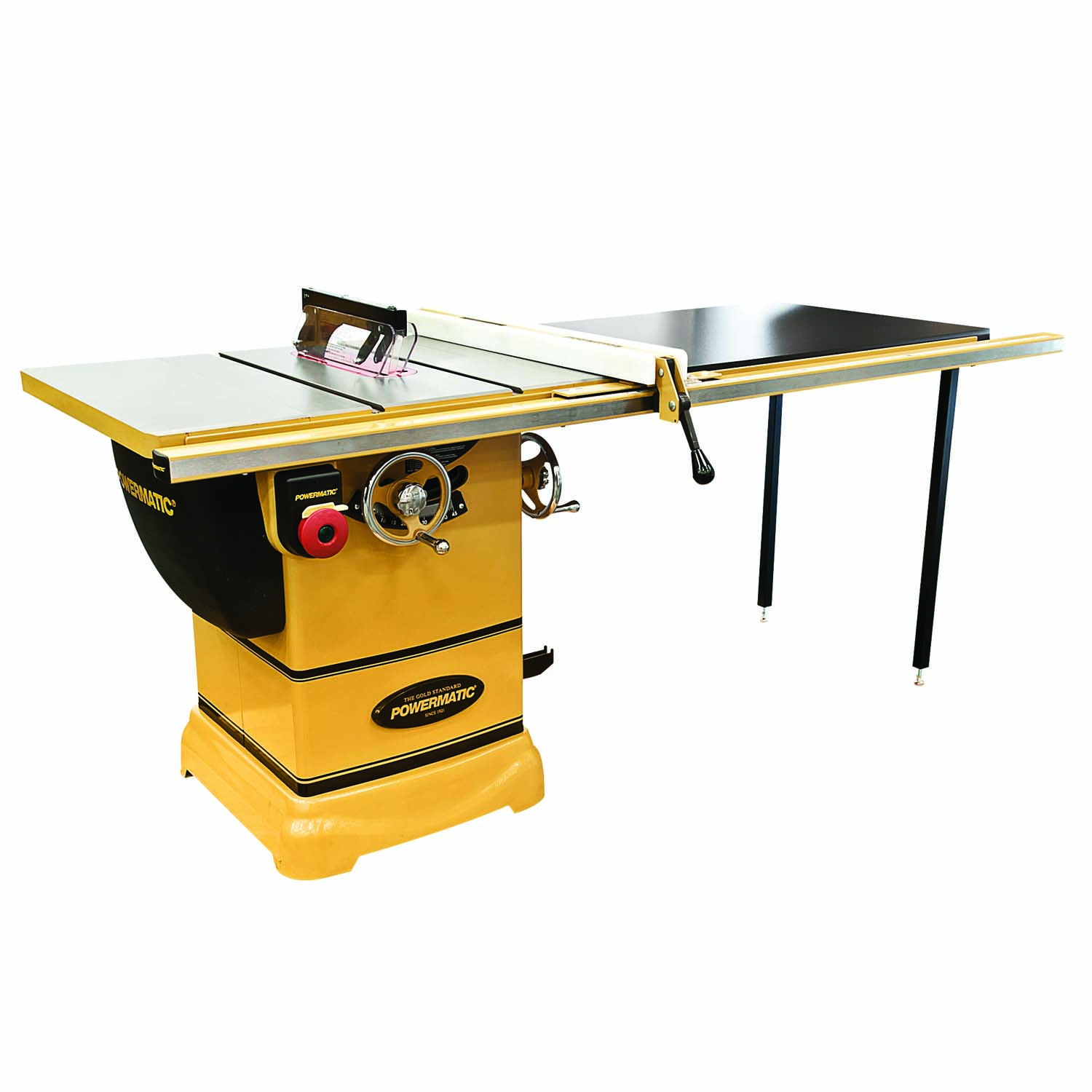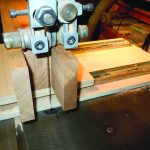We may receive a commission when you use our affiliate links. However, this does not impact our recommendations.

Tool: Powermatic PM1000
Manufacturer: Powermatic
Price: $2400 (50″ fence)
The list of 110 volt cabinet saws continues to grow. That’s great news, as it puts a great many of the benefits of a cabinet saw within reach of home-shop and hobbyist woodworkers. The PM1000 from Powermatic is a really nice machine that I’d love to have in my garage.
The cabinet saw benefits I’m speaking of are having the motor inside the cabinet, and having the saw’s trunnions attached to the cabinet instead of the underside of the table. With the motor on the inside, you can push the saw right up against the wall. You can’t do that with a typical contractor saw, because the motor hangs off the back. With the trunnions mounted to the cabinet, squaring the blade to the table is a snap. If you’ve ever had to make that adjustment on a saw whose trunnions are mounted to the underside of the table, you understand the headache that can cause.
The cabinet saw benefits that are missing are power and mass. A typical industrial cabinet saw has up to an 8 hp motor and run on a 220 or even 440 volt circuit. They also contain lots of cast iron making them beastly heavy, which greatly reduces vibration.
The PM1000 runs on a standard 110 volt circuit, with a 1-3/4 hp motor that draws 15 amps, so you will need to make sure it’s plugged in to a 20 amp circuit. If you’re so inclined, you can wire the motor for a 220 volt circuit. As for mass, the PM1000 weighs in at about 350 lbs, as opposed to its big brother – the PM2000 – which is about 550 lbs.
In my experience, while you won’t be able to throw hard maple through this saw at ten feet per second, 1-3/4 hp is sufficient to tackle most non-industrial size jobs, if only a little slower.
The PM1000 is equipped with the usual blade guard, riving knife/splitter required on all saws. It’s also equipped with a T-style fence, and miter gauge. Large, beveled cast iron tables come in either 30″ or 52″ (pictured) sizes. The beefy 7″ diameter hand wheels for blade height and bevel adjustment are satisfying to use. The blade is surrounded by a funnel-style shroud, emptying a great percentage of dust into the saw’s 4″ dust port.
Another nice feature that many manufacturers seem to miss is the generously-sized, hinged access door to get at the inside of the cabinet. Whether it’s just to clean out dust, or to make adjustments, I find myself poking around inside the cabinet regularly enough to make this an important feature. A hinged door is much easier than having to unscrew a panel.
Here are some supplies and tools we find essential in our everyday work around the shop. We may receive a commission from sales referred by our links; however, we have carefully selected these products for their usefulness and quality.








